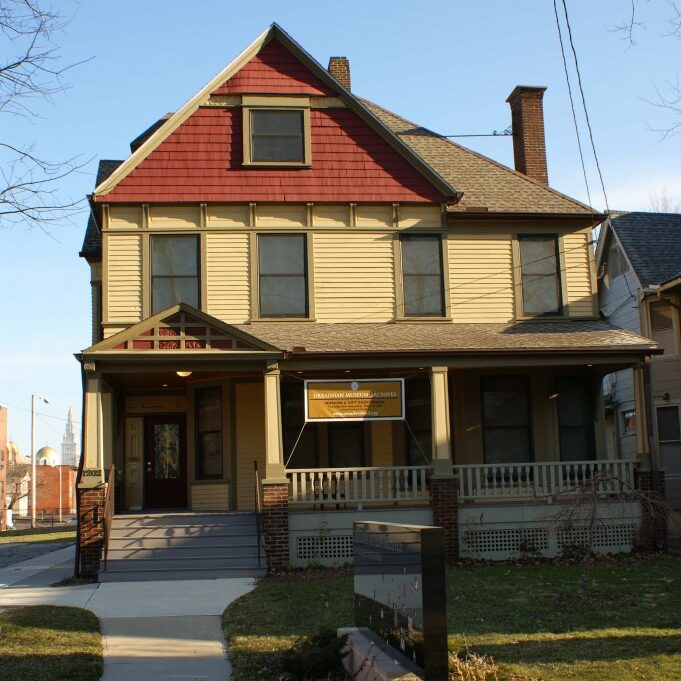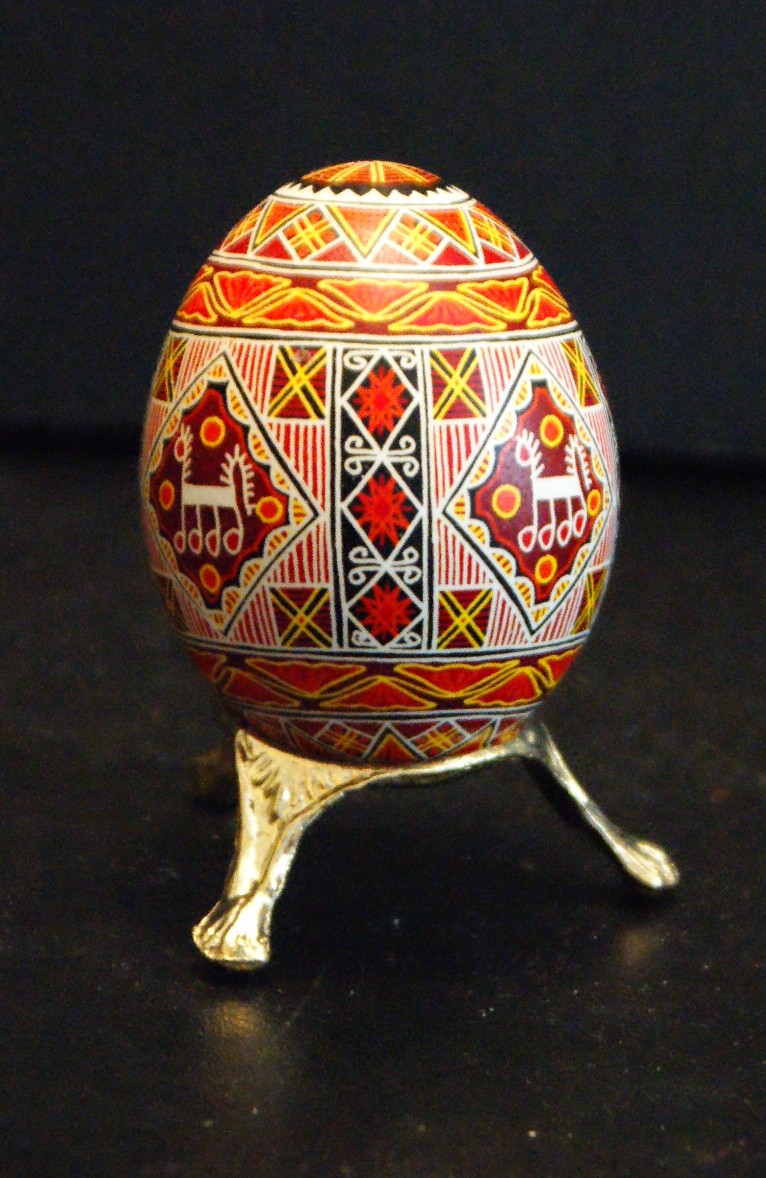Discovering the Depth of Cleveland’s Ukrainian Museum-Archives
Situated on Kenilworth Avenue, opposite Lincoln Park, is a large yellow craftsman-style house with a red tympanum and an inviting front porch. This building is home to Cleveland’s Ukrainian Museum-Archives. Founded in 1952, the museum-archives is dedicated to collecting and preserving items from Ukrainian history, culture, and immigration to the United States, including family heirlooms handed down through the generations—many of which might have otherwise been deliberately destroyed in Soviet Ukraine.

Ukrainian immigrants were attracted to Cleveland’s Tremont neighborhood from the late 1800s and to the mid-1900s because of its ready access to the city’s industry. “Workers in this neighborhood would walk to Industrial Valley,” Andrew Fedynsky, UMA Director and Resident Scholar said when he gave us a tour of the museum-archives. Today, the Industrial Valley is more commonly known as the Steelyard Commons, but at that time was home to many factories, mills, lumberyards, and other industries that attracted many different immigrant groups to the area. “It was a very vibrant, diverse neighborhood.”
Like many American cities, Tremont saw a period of decline in the 1970s and 1980s with the rise of suburban neighborhoods and the construction of the freeway. For several years, UMA and its rich collection was neglected and almost abandoned. However, the neighborhood began to see renewal and growth again in the 1990s. It was then that the museum-archives made the deliberate decision to stay in the neighborhood and contribute to its revitalization. Andy, who led this campaign, said, “We knew if it was a museum, then it had to look like a museum.”
Since that time, UMA has remodeled their exhibits. Each room of the house now serves as a window into a slice of time—laying out the events that took place in the Ukraine and the resulting migration to the United States with countless artifacts brought over by Ukrainian immigrant families or collected here by immigrants. Each item is a testament to the individual experience as well as the broader cultural moment. Through these artifacts, photographs, and papers, the exhibits are able to trace the stories of individuals who came to the Tremont neighborhood and the personal histories that chapped this community. The archive is full of rare and unique items, from handmade Easter eggs and tapestries to paintings and gramophone records to genealogical books and works of fiction.

